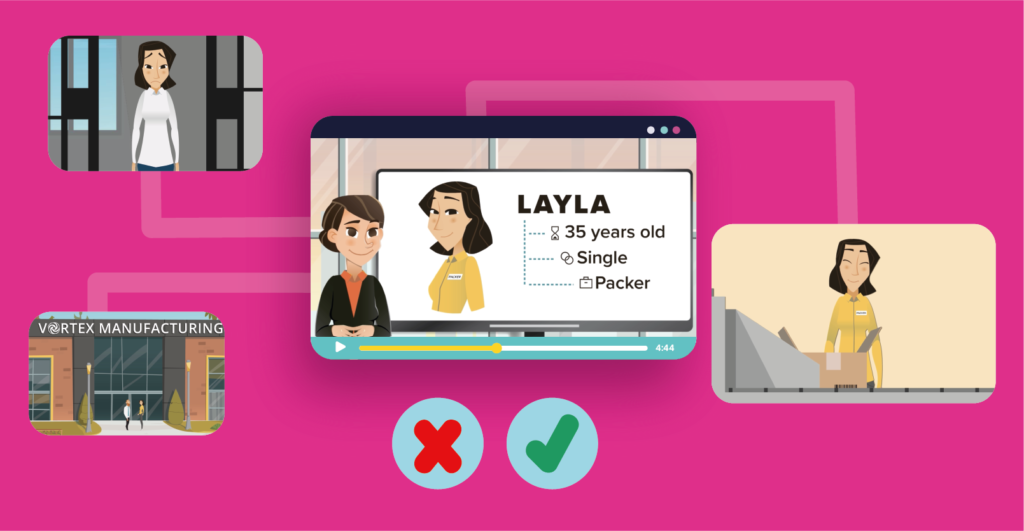4 Types of Interactive e-Learning Activities to Boost Learner Engagement

Are you always looking for ways to make your e-Learning content more interesting and effective? If so, you might need to incorporate interactive activities in your e-Learning courses. Designing engaging and effective learning experiences are essential to any e-Learning programmes. They’re capable of emphasising the relevance of the learning material, and they can also increase engagement.
There are many types of e-Learning activities that you can utilise in your e-Learning content. In this article, we’ll share with you some engaging activities that might create memorable learning experiences for your learners.

Quizzes
Quizzes are an essential component of most e-Learning courses. It is used to evaluate learners’ knowledge and ensure the learning objectives of the training are being met. Quizzes are typically placed at the end of a course and serve as a graded assessment. But, they are also effective methods to use as recurrent checkpoints to help learners review key points, before moving on to the next section of the course.
To engage learners, your quizzes should be fun to play! You can choose from various types of quizzes, such as multiple-choice, fill-in-the-blanks, and drag-and-drops. You can also set a time limit for taking a quiz to prevent cheating. Feedbacks are essential, too! You can give feedback on each incorrect answer to help learners understand why their answer may have been wrong, and which option is correct.

Branched Scenarios
A branching scenario places learners in a situation where they are faced with a problem that has multiple solutions. The learners will then need to choose one course of action out of the probable solutions. Each decision brings new challenges and more choices. And as the learners take decisions and paths, the story unfolds unpredictably, making the learning experience more interactive and fun.
According to Commlab India, branching scenarios are best used to enhance your learners’ decision-making skills and prepare them for real-time situations. For instance, if you have to teach employees how to respond to a business crisis, you can use branching scenarios to allow learners to choose the suitable action in such a situation. In response, as they face different situations, learners can improve their situational awareness and let them realise the impact of their decisions. In branching scenarios, learners learn from mistakes without feeling the pressure of real-life consequences, which allows them to focus and freely explore the options accessible to them.

Interactive Videos
Usually, in a training video, learners can press play, pause, rewind, replay, and fast forward on different scenes. However, this type of content lacks engagement. Thus, this is where interactive videos can fit in. Interactive videos are made of clickable options with different outcomes, depending on the decision made by the learner. Instead of consuming the video passively, learners can actively participate in the content, providing them a unique experience.
For example, Nike created a fun interactive video wherein it lets you decide your outfit for a photoshoot. In the video, the stylist interacts directly with the user and whenever she asks a question, an interactive menu prompts the viewer to select a garment they want to use. After each selection, the stylist gives positive feedback on the viewer’s action. This kind of interactive video provides a realistic idea of how an outfit looks in the whole collection, and allows the user to manipulate the story of the film.

AR Simulations
When we talk about Augmented Reality, it is often linked to social media platforms, like Snapchat, and mobile games, like Pokemon Go. But today, AR is progressively used in educational settings to enable learners to be truly immersed in training and to efficiently acquire necessary skills and information on a specific subject.
Since AR applications can be a powerful engagement tool, employers can provide AR experiences into their onboarding programmes. For example, as part of the onboarding process, employees could use their mobile devices to scan an image in front of them to bring up a video about the organisation’s history, values, and culture. By adding Augmented reality, employees may be able to happily learn about the company and may be eager to return the next day. Utilising AR in e-Learning is not only fun, but it is safe, too! Augmented reality can provide learners the opportunity to develop hands-on experiences, while also not putting themselves or others at risk. Given that employee safety is such an important aspect in corporate training, AR in training can also help the learners retain more knowledge than any safety instruction guidebook.
“Like any other training developer, there’s always a constant aim to make e-Learning courses more effective, interactive, and engaging.”
It is then essential to provide content in a manner that is simple, yet still engaging for learners to understand and retain knowledge. Hopefully, the e-Learning activities we discussed above will help you start creating better e-Learning experiences.
Would you like to make your e-Learning courses more interactive? We at SSA Innovations have the skills and experience to develop all types of interactive e-Learning programmes. From interactive videos, quizzes, to AR simulations, we will help you turn your ordinary courses into fun and engaging experiences! Contact us today and get started with your own e-Learning solutions!
Related Topics

The Value of Human Wisdom in AI-Driven Learning and Development
AI is leading the way in transforming education. However, it...

Digital vs. Customised Learning: What’s the Difference and Why it Matters
As organisations increasingly turn to online platforms to deliver learning...

e-Learning: How does AI Personalisation Work?
AI personalisation is changing the landscape of online learning. By...

FOBO: The Fear of Becoming Obsolete (Infographic)
Experiencing a sense of being left behind and finding it...

Discovering No-Code Development
Picture a scenario where you have a small clothing business...